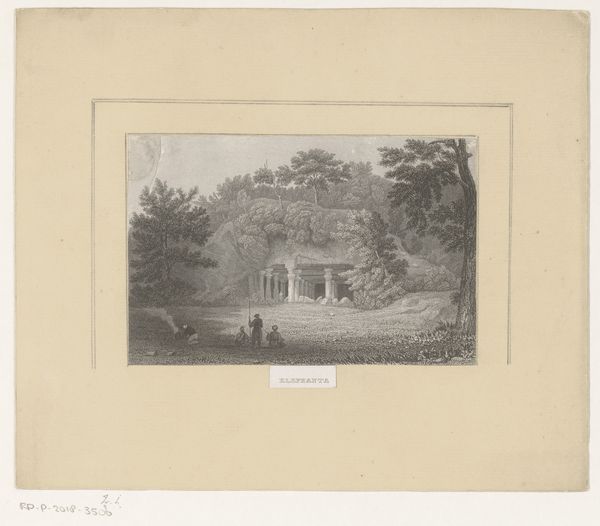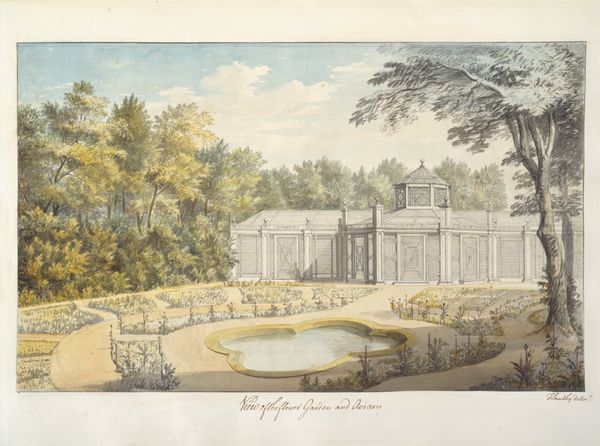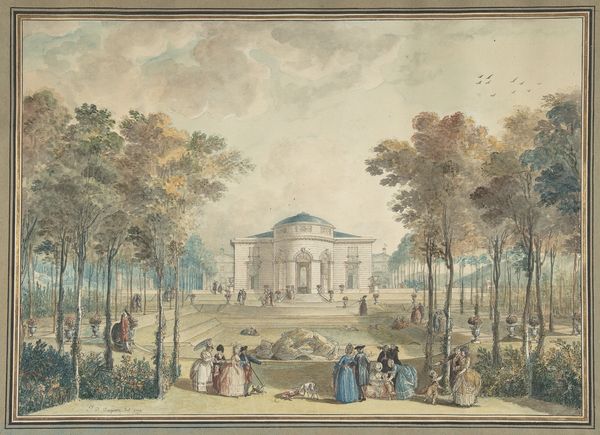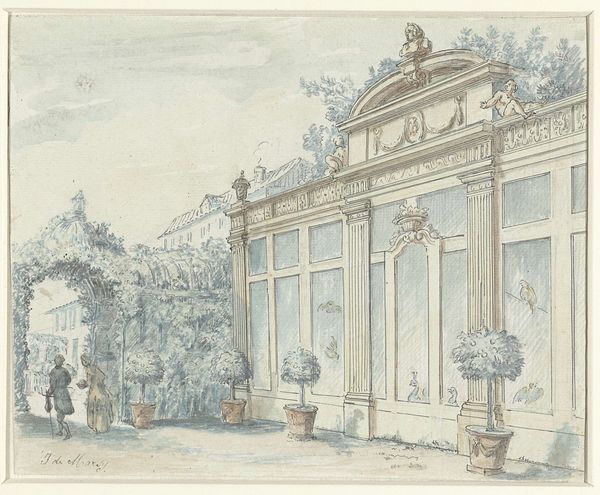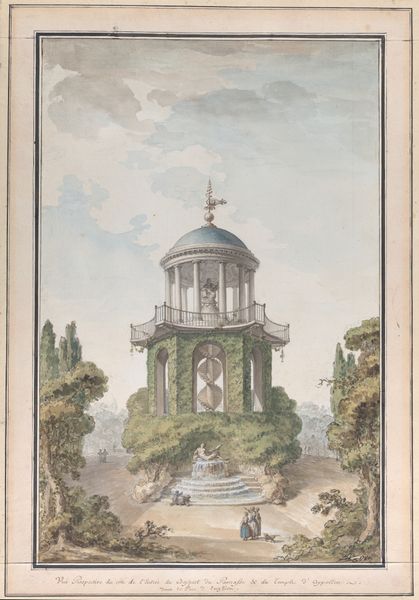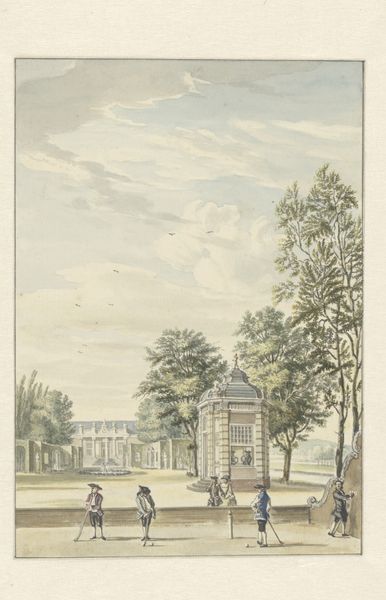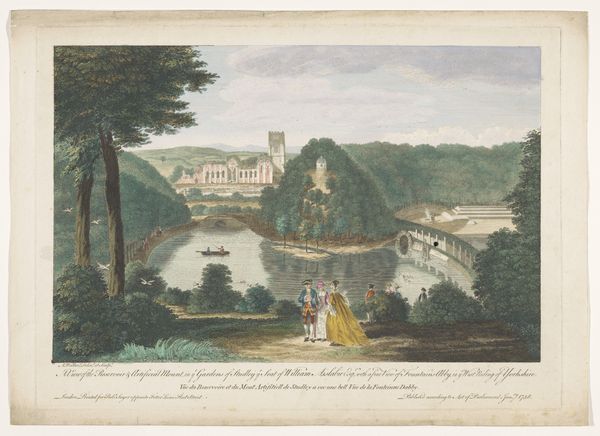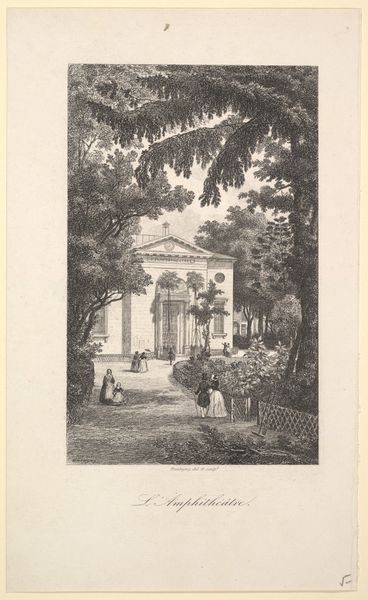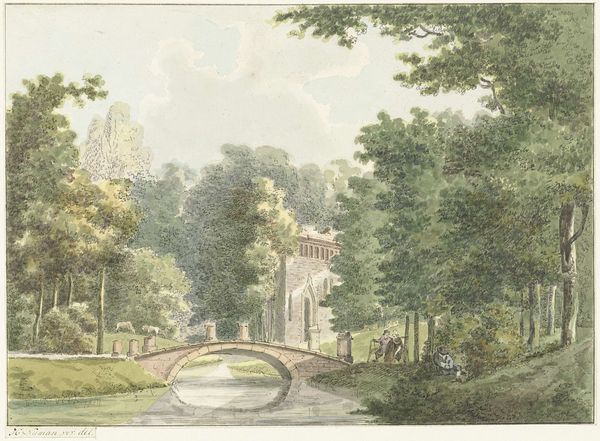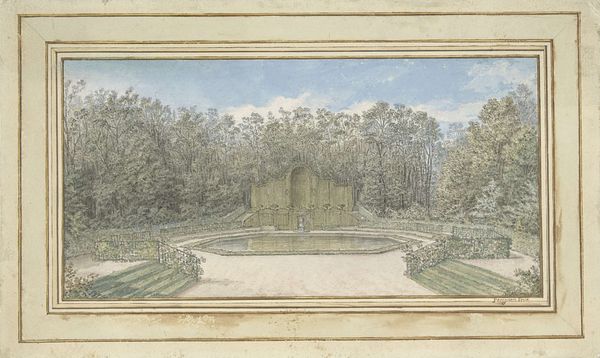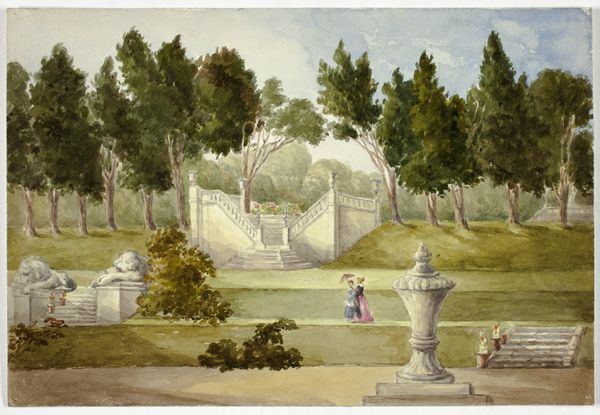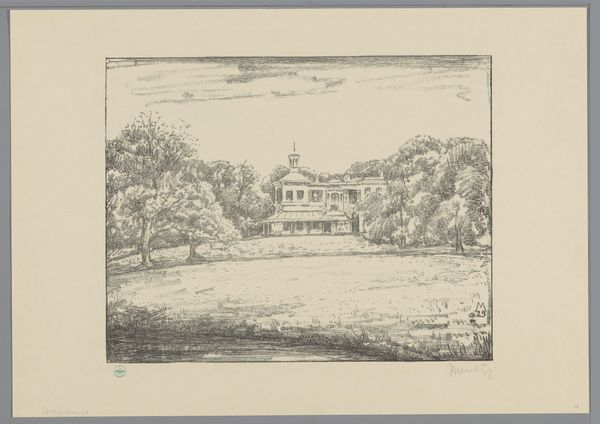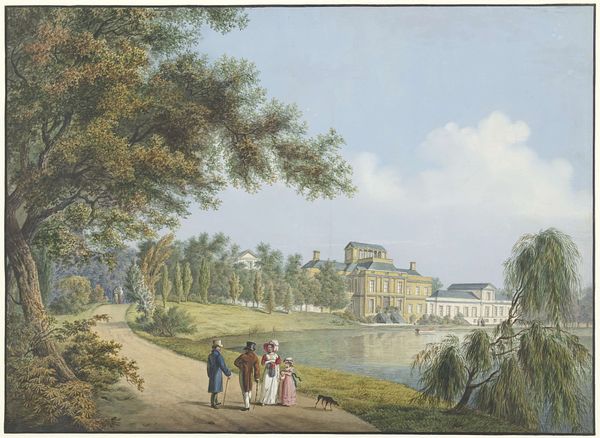
Der Pavillon im Ettersburger Park bei Weimar, auf der Treppe die Herzogin Anna Amalia, einen Herrn begrüßend c. 1790 - 1794
0:00
0:00
drawing, coloured-pencil, plein-air, watercolor, ink, architecture
#
drawing
#
neoclacissism
#
coloured-pencil
#
plein-air
#
landscape
#
watercolor
#
ink
#
coloured pencil
#
romanticism
#
watercolour illustration
#
architecture
Copyright: Public Domain
Editor: So, here we have Georg Melchior Kraus' "The Pavilion in Ettersburg Park near Weimar, with Duchess Anna Amalia Greeting a Gentleman on the Steps," made around 1790 to 1794, using watercolor, ink, and colored pencil. It gives me a sense of restrained elegance, like a stage set for a quiet drama. What do you see in it? Curator: This image encapsulates the late 18th-century shift towards Neoclassicism and emerging Romantic sensibilities. Kraus presents us with not just a landscape, but a constructed social space. The Duchess, greeting a man on the steps, is framed within a pavilion, suggesting power, privilege and orchestrated social rituals. What's striking is how nature, seemingly untamed around the edges, is carefully managed closer to the architectural structure. How does that tension between wildness and order speak to you? Editor: I guess it reflects the Enlightenment desire to control and categorize nature, contrasted with the burgeoning Romantic interest in the sublime power of nature itself? Curator: Exactly. And Duchess Anna Amalia herself was a significant figure, a patron of the arts and intellectual life. The park and pavilion became spaces for fostering conversations, essentially reinforcing a certain ideology and social structure. So, who is invited into the pavilion and on what terms become important questions. What impact does Kraus' choice to focus on such a setting have on how we perceive these power dynamics? Editor: It makes me think about who had access to these spaces and conversations, and who was excluded. The formality feels like a deliberate barrier. Curator: Precisely. The work prompts us to think about art as not just aesthetic expression, but also a reflection and reinforcement of existing power structures and social stratifications. Editor: I never considered a landscape could be so charged with social meaning. Thanks for opening my eyes to it! Curator: My pleasure! Looking critically at even seemingly idyllic scenes allows us to uncover hidden narratives and power dynamics, something relevant even today.
Comments
No comments
Be the first to comment and join the conversation on the ultimate creative platform.
